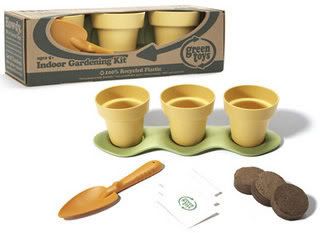
Daring Baker June Challenge Complete!
DANISH DOUGH
Makes 2-1/2 pounds dough
Ingredients
For the dough (Detrempe)
1 ounce fresh yeast or 1 tablespoon active dry yeast
1/2 cup whole milk
1/3 cup sugar
Zest of 1 orange, finely grated
3/4 teaspoon ground cardamom
1-1/2 teaspoons vanilla extract
1/2 vanilla bean, split and scraped
2 large eggs, chilled
1/4 cup fresh orange juice
3-1/4 cups all-purpose flour
1 teaspoon salt
For the butter block (Beurrage)
1/2 pound (2 sticks) cold unsalted butter
1/4 cup all-purpose flour
DOUGH
Combine yeast and milk in the bowl of a mixer fitted with the paddle attachment and mix on low speed. Slowly add sugar, orange zest, cardamom, vanilla extract, vanilla seeds, eggs, and orange juice. Mix well. Change to the dough hook and add the salt with the flour, 1 cup at a time, increasing speed to medium as the flour is incorporated. Knead the dough for about 5 minutes, or until smooth. You may need to add a little more flour if it is sticky. Transfer dough to a lightly floured baking sheet and cover with plastic wrap. Refrigerate for 30 minutes.
Without a standing mixer: Combine yeast and milk in a bowl with a hand mixer on low speed or a whisk. Add sugar, orange zest, cardamom, vanilla extract, vanilla seeds, eggs, and orange juice and mix well. Sift flour and salt on your working surface and make a fountain. Make sure that the “walls” of your fountain are thick and even. Pour the liquid in the middle of the fountain. With your fingertips, mix the liquid and the flour starting from the middle of the fountain, slowly working towards the edges. When the ingredients have been incorporated start kneading the dough with the heel of your hands until it becomes smooth and easy to work with, around 5 to 7 minutes. You might need to add more flour if the dough is sticky.
BUTTER BLOCK
1. Combine butter and flour in the bowl of a mixer fitted with a paddle attachment and beat on medium speed for 1 minute. Scrape down the sides of the bowl and the paddle and then beat for 1 minute more, or until smooth and lump free. Set aside at room temperature.
2. After the detrempe has chilled 30 minutes, turn it out onto a lightly floured surface. Roll the dough into a rectangle approximately 18 x 13 inches and ¼ inch thick. The dough may be sticky, so keep dusting it lightly with flour. Spread the butter evenly over the center and right thirds of the dough. Fold the left edge of the detrempe to the right, covering half of the butter. Fold the right third of the rectangle over the center third. The first turn has now been completed. Mark the dough by poking it with your finger to keep track of your turns, or use a sticky and keep a tally. Place the dough on a baking sheet, wrap it in plastic wrap, and refrigerate for 30 minutes.
3. Place the dough lengthwise on a floured work surface. The open ends should be to your right and left. Roll the dough into another approximately 13 x 18 inch, ¼-inch-thick rectangle. Again, fold the left third of the rectangle over the center third and the right third over the center third. No additional butter will be added as it is already in the dough. The second turn has now been completed. Refrigerate the dough for 30 minutes.
4. Roll out, turn, and refrigerate the dough two more times, for a total of four single turns. Make sure you are keeping track of your turns. Refrigerate the dough after the final turn for at least 5 hours or overnight. The Danish dough is now ready to be used. If you will not be using the dough within 24 hours, freeze it. To do this, roll the dough out to about 1 inch in thickness, wrap tightly in plastic wrap, and freeze. Defrost the dough slowly in the refrigerator for easiest handling. Danish dough will keep in the freezer for up to 1 month.
APPLE FILLING
Makes enough for two braids
Ingredients
4 Fuji or other apples, peeled, cored, and cut into ¼-inch pieces
1/2 cup sugar
1 tsp. ground cinnamon
1/2 vanilla bean, split and scraped
1/4 cup fresh lemon juice
4 tablespoons unsalted butter
Toss all ingredients except butter in a large bowl. Melt the butter in a sauté pan over medium heat until slightly nutty in color, about 6 - 8 minutes. Then add the apple mixture and sauté until apples are softened and caramelized, 10 to 15 minutes. If you’ve chosen Fujis, the apples will be caramelized, but have still retained their shape. Pour the cooked apples onto a baking sheet to cool completely before forming the braid. (If making ahead, cool to room temperature, seal, and refrigerate.) They will cool faster when spread in a thin layer over the surface of the sheet. After they have cooled, the filling can be stored in the refrigerator for up to 3 days. Left over filling can be used as an ice cream topping, for muffins, cheesecake, or other pastries.
DANISH BRAID
Makes enough for 2 large braids
Ingredients
1 recipe Danish Dough (see below)
2 cups apple filling, jam, or preserves (see below)
For the egg wash: 1 large egg, plus 1 large egg yolk
1. Line a baking sheet with a silicone mat or parchment paper. On a lightly floured surface, roll the Danish Dough into a 15 x 20-inch rectangle, ¼ inch thick. If the dough seems elastic and shrinks back when rolled, let it rest for a few minutes, then roll again. Place the dough on the baking sheet.
2. Along one long side of the pastry make parallel, 5-inch-long cuts with a knife or rolling pastry wheel, each about 1 inch apart. Repeat on the opposite side, making sure to line up the cuts with those you’ve already made.
3. Spoon the filling you’ve chosen to fill your braid down the center of the rectangle. Starting with the top and bottom “flaps”, fold the top flap down over the filling to cover. Next, fold the bottom “flap” up to cover filling. This helps keep the braid neat and helps to hold in the filling. Now begin folding the cut side strips of dough over the filling, alternating first left, then right, left, right, until finished. Trim any excess dough and tuck in the ends.
Egg Wash
Whisk together the whole egg and yolk in a bowl and with a pastry brush, lightly coat the braid.
Proofing and Baking
1. Spray cooking oil (Pam…) onto a piece of plastic wrap, and place over the braid. Proof at room temperature or, if possible, in a controlled 90 degree F environment for about 2 hours, or until doubled in volume and light to the touch.
2. Near the end of proofing, preheat oven to 400 degrees F. Position a rack in the center of the oven.
3. Bake for 10 minutes, then rotate the pan so that the side of the braid previously in the back of the oven is now in the front. Lower the oven temperature to 350 degrees F, and bake about 15-20 minutes more, or until golden brown. Cool and serve the braid either still warm from the oven or at room temperature. The cooled braid can be wrapped airtight and stored in the refrigerator for up to 2 days, or freeze for 1 month.
my notes: I used two pints of apples that I canned last fall (!!!) and I sprinkled raw sugar on top of the braid. This was a good recipe, but it had so many steps I am not sure I will crave making this soon. It was a great experience though, and my house smelled like a professional bakery. The goods, they were loved by all, we finished off the last of it today for breakfast, YUM!
29 June, 2008
Danish Braid
Posted by
bethany (dreadlock girl)
at
14:06
10
comments
![]()
![]()
Labels: Daring Baker, recipes
27 June, 2008
do you like free toys??
If you like freebies, there is a place for you: a wonderful blog called dkMommy Spot.
Here are the drawings, some are ending today, others tomorrow...and so on....and she keeps posting more! You have to go see.
Here is the link to all the giveaways!!! dkSummer Fun Giveaway is here!!!
Among other giveaways these are some:




Posted by
bethany (dreadlock girl)
at
17:02
0
comments
![]()
![]()
Labels: dkmommy spot, giveaways
25 June, 2008
two little challenges- to make a difference.
Today, in my blog travels I happend upon two food growing, preserving and eating challenges. I have told you about my book challenges before, and this is the same idea, just different. I planted a huge garden anyway, and will have food in a couple months coming out our ears here is the deal with these wonderful challenges:
The 100 FOOT DIET the modern times Victory Garden! Here is the low-down on this challenge, these are the reasons and rules for the challenge, and I copied this directly from urban homestead go there for all the info you could ever need !! :)
Here is the low-down on this challenge, these are the reasons and rules for the challenge, and I copied this directly from urban homestead go there for all the info you could ever need !! :)
100 Foot Diet - Growing Closer to Home: A Lifelong Challenge
It wasn’t that long ago (1940s) that people planted Victory Gardens when it became necessary for them, due to wartime shortages, to grow their own food. Now, it’s our turn
If you want to fight against peak oil, climate change and our consumerist culture, then join us and start a living protest right in your own back (front) yards. Be the change, live the solution! Use your yard (or balcony or porch steps) not only to grow food but also to cultivate a healthier and more fulfilling life.
There have been 100 mile diet and other eat local challenges. PTF’s homegrown revolutionaries are upping the ante by reducing the mileage to a few steps - to right outside your back or front door.
The challenge is simple. Beginning as soon as you can, prepare a meal at least once a week with only homegrown vegetables, fruit, herbs, eggs, dairy products or meat, using as few store bought ingredients as possible.
The purpose is plain - the waging of an all-out fight against the forces that keep you dependent on the system of petroleum fueled food. The degree to which you rely on today’s artificial corporate structure determines the extent of your vulnerability. Resolve to lessen your dependence on outside food sources.
The result is revolutionary. As you take back responsibility for your food supply, you’ll experience the empowerment and fulfillment that comes from learning the basic skills of providing for yourself and your family.
Let’s sow the seeds of victory and get our hands dirty to fill our plates. Plant a VICTORY GARDEN today!
:: Guidelines ::
A meal must be comprised of food grown on your property or garden plot (literally or figuratively within - 100 feet - of your front or back door). If non-homegrown ingredients are needed, then we suggest following these modified locavore guidelines
If not from BACKYARD, then Locally produced (PTF’s addition)
If not LOCALLY PRODUCED, then Organic.If not ORGANIC, then Family farm.If not FAMILY FARM, then Local business.If not a LOCAL BUSINESS, then Fair Trade.
:: Getting Started ::
Plan what food you can grow. Your first meal might only have a few herbs from small pots growing in your window or sprouts sprouted in a jar. In northern climates, January is a good time to plan for spring gardening (think seed catalogues!). Look around where you live and locate a space to plant a small garden. If you sow a variety of vegetables and fruit, soon you will have enough ingredients to prepare a full meal!
:: Moving Forward ::
Once you have planted your garden and have prepared a weekly homegrown meal, consider how you can expand your “farm,” increase your garden’s productivity, and, thereby, cook more homegrown meals per week. Then take a further step on the path to independence and victory by learning to preserve your garden harvest.
:: Keeping Track ::
Keep track of your progress. If you wish, once a week you are invited to leave a comment with a link to your website or, if you don’t have a website, to describe your meal in the comment box and let others know of your progress.By planting a Victory Garden means:
- More nutrious food & better health
- Food security
- Improving quality of life
- Saving money
- Reducing food miles, fuel & energy dependence
- Reducing excessive packaging and effects of climate change
HOMEGROWN REVOLUTION - Radical change taking root
Declare victory against climate change and corporate powers that be. Take control over the quality of your food and improve your health and immediate environment.
View our inspiring video on YOUTUBE - HOMEGROWN REVOLUTION >>
Join this Victory Garden Challenge, create and inspire new organic gardens.
Spread the seeds and sow the word - let’s grow the future.
Let’s start right here, right now and remember this growing challenge should fun!
The second challenge works right along with the first, and it is about preserving the harvest, here is the info from Little Homestead in the City
The Wartime Pantry
During the two world wars, despite the increased availability of canned goods, American women were called upon to put up their own food as part of their patriotic duty. Available tin was used for some commercial canning but most tin was used in the war effort. By this time, hot pack canning was considered the most reliable and, with “two hours from garden to can,” the rule to follow. Around World War I, canning clubs were encouraged and fostered by such groups as the Deparment of Home Economics at Cornell University in Ithaca, New York. Farm women and their teenage children were also encouraged to start canning businesses from their farm homes.
A 1942 article detailed the effort: “This year, American homemakers are canning at home as a patriotic duty, for it is especially important that no food be allowed to go to waste during the summer and fall . . . From the standpoints of family health and economy, the canning of vegetables from Victory Gardens, and homegrown or locally-gathered wild fruits, and also reasonably priced fresh products on the market is one of the homemaker’s important contributions to the wartime nutrition program.”
Courtesy WHYY
Back to Basics
Back in January PTF kicked off the New Year with the 100 Victory Garden -100 Foot Diet Challenge Are you ready for another?
Across the nation, folks are down on their knees, hands dirty, seeds and trowel clench firming in hand determine to grow their own food Though some crops may fail miserably others crops may step in and take up the slack. With hard work, effort and patience this hearty lot of homegrown soildiers will be blessed up to their eye balls in produce.
So now onto the next phase of the challenge, extending your garden’s bounty by preserving the harvest.
Preservation Methods
Canning
Freezing
Drying
Fermenting
Storage
Stockpiling your pantry
Root cellar
Share
Sharing your bounty - trade, barter, exchange with your neighbors.
Tally Ho
Keep track of your preservation and harvest efforts. Tally up how much you’ve harvested and preserved during the course of the growing season. Recording keep is essential if you want to know how well your growing efforts were for the year.
Start by keeping a daily journal with records on how much eggs, produce were harvested, what you preserved that day and even jot down favorite recipes.
:: Resources ::
Nation Center for Food Preservation
Food Preservation Methods
Preserving your harvest with turn-of-the-century methods
Food Storage FAQ
:: Books & Supplies ::
Ball Home Canning Basics Kit NEW ITEM!
Hanging Food Dryer NEW ITEM!
Food Preservation Helpers
Food Preservation Books
:: Participating ::
If you like to take part in this challenge, post in comment box below. Participating on the internet? Feel free to use the ‘B2B’ icon if you are a taking part (remember to “save as” to not use our bandwidth ) and link to this challenge here
By being a HARVEST KEEPER you are
- Providing nutrious food for your family
- Ensuring food security
- Improving quality of life
- Saving money
- Reducing food miles, fuel & energy dependence
- Reducing excessive packaging and effects of climate change
Enjoy the fruits of your labor!
OH, this is going to be fun!!!!!!!

Posted by
bethany (dreadlock girl)
at
14:29
2
comments
![]()
![]()
Labels: 100 foot diet challenge, bungaree garden, urban homestead
eat.play.snif.
Posted by
bethany (dreadlock girl)
at
11:29
0
comments
![]()
![]()
Labels: bungaree photos, corvallis, j, o, picnic
24 June, 2008
first fruits of splendour


 I have planted wallflowers, lavender, rosemary, foxglove and some other stuff that I forget what it is called :) Oh, and the hanging flowers are petunias...lovely.
I have planted wallflowers, lavender, rosemary, foxglove and some other stuff that I forget what it is called :) Oh, and the hanging flowers are petunias...lovely.








Posted by
bethany (dreadlock girl)
at
15:06
0
comments
![]()
![]()
Labels: bungaree garden, bungaree photos









































![[ravelry-88x31-borderless.jpg]](http://1.bp.blogspot.com/_G_d-t9YiCzM/RwW4f_umzUI/AAAAAAAAA0Q/FdPaI6cclQc/s1600/ravelry-88x31-borderless.jpg)